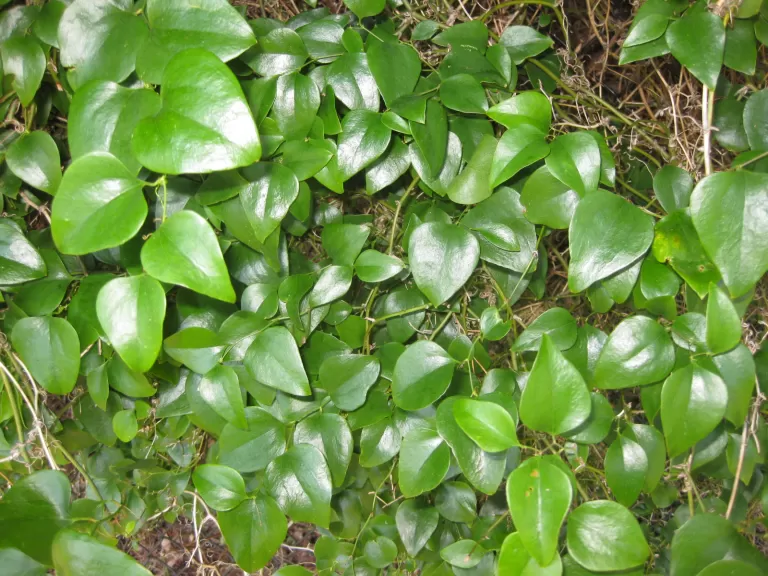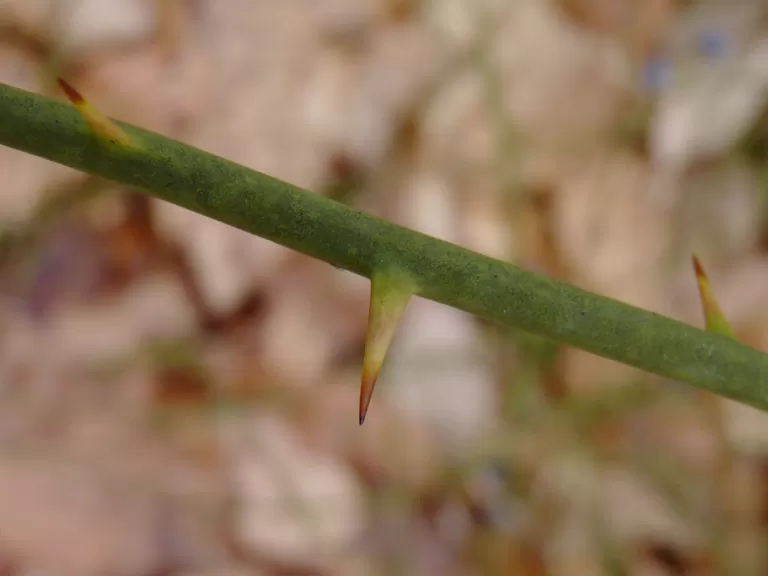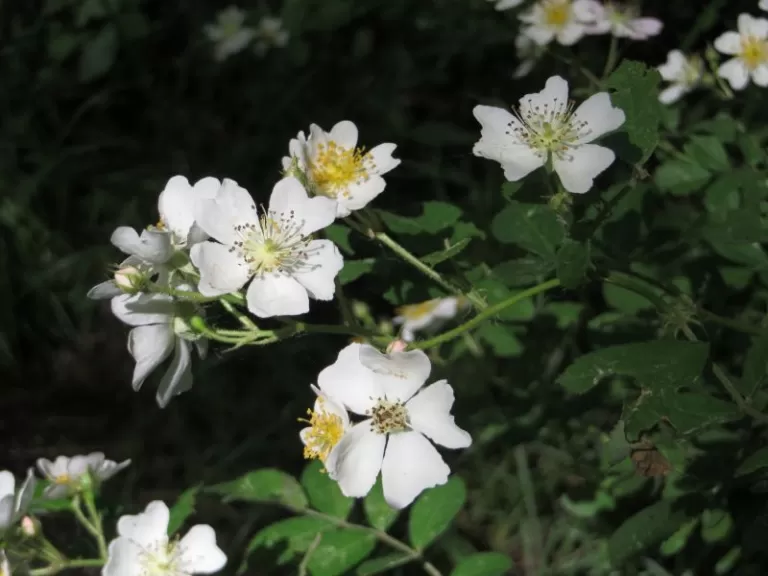Perched Wetland
The inner loop and surrounding trail encompasses a perched wetland that is home to a range of plants and trees. But if you are visiting the trail during the colder months, it will look like a bramble of vines and thickets.
The inner loop and surrounding trail encompasses a perched wetland that is home to a range of plants and trees. But if you are visiting the trail during the colder months, it will look like a bramble of vines and thickets.

One easily identifiable shrub is greenbrier (Smilax rotundifolia), so called because its vines and branches stay green through the winter, and it has large straight thorns that are darkly colored at the tip. Greenbrier uses its twisting tendrils to climb 10 to 20 feet and is adaptable to many different habitats. It is a "pioneer" species, meaning it is often the first to cover land after fires or clearings.
Small animals and birds rely on this native species for nesting and food, as it fruits during the winter when food is difficult to find. Be on the lookout for deer when this plant leafs out, as it is a food source for whitetailed deer, who eat the shoots and leaves.
Photo: Greenbrier, photograph from Wikimedia Commons.
Photo: Greenbrier thorn, photograph from Flickr.


As you approach the bridge, on the righthand side you can see a large multiflora rose (Rosa multiflora) bramble that is climbing up a tree. Multiflora rose is an invasive species native to Japan where it is also called rambler rose, and was used as rootstock for cultivated roses.
Photo: Multiflora rose by Lisa Eggleston.
Note that the next stop is on the Inner Loop Trail. Turn right at the intersection just after the bridge.
Back to Wolbach Farm Interpretive Trail main page.